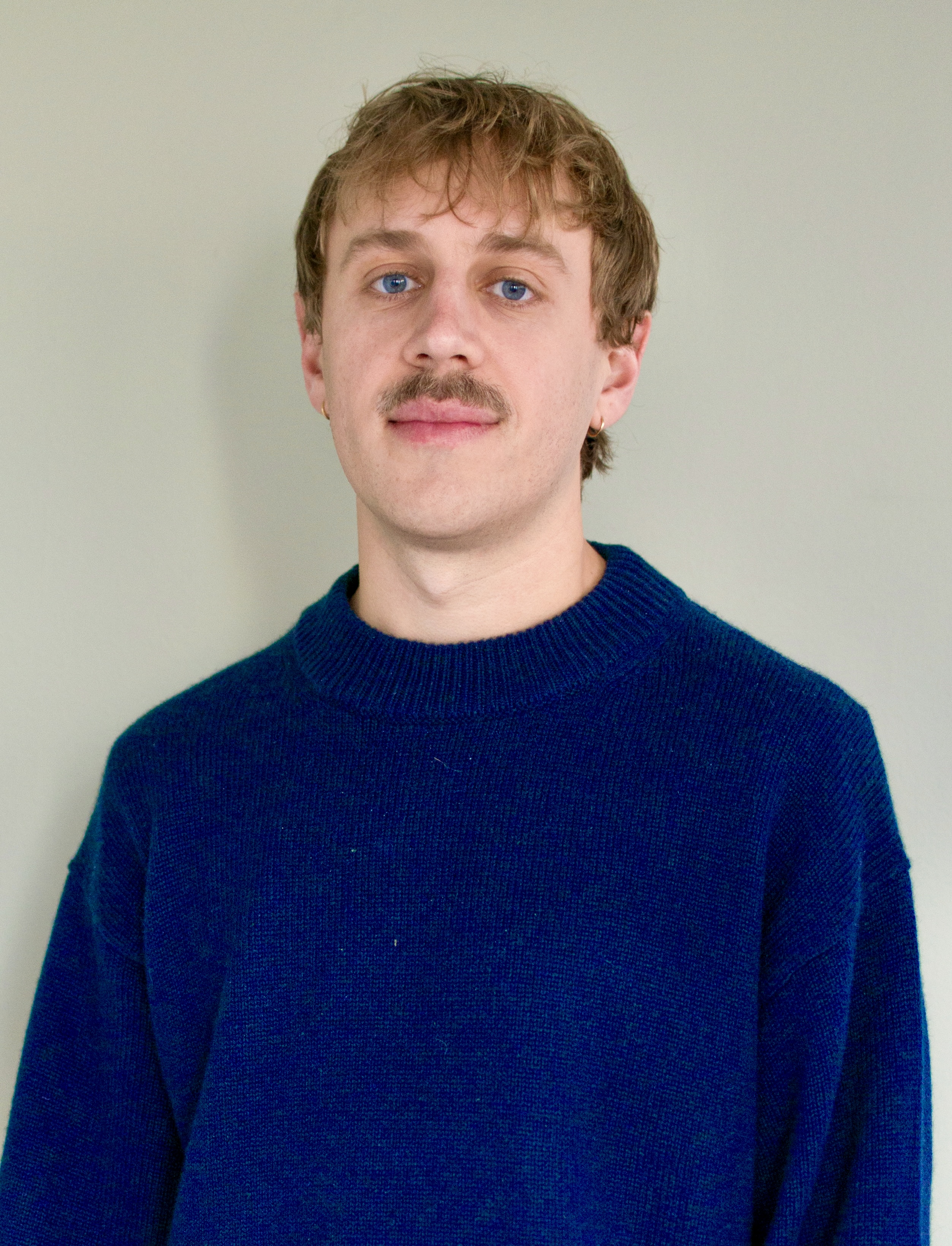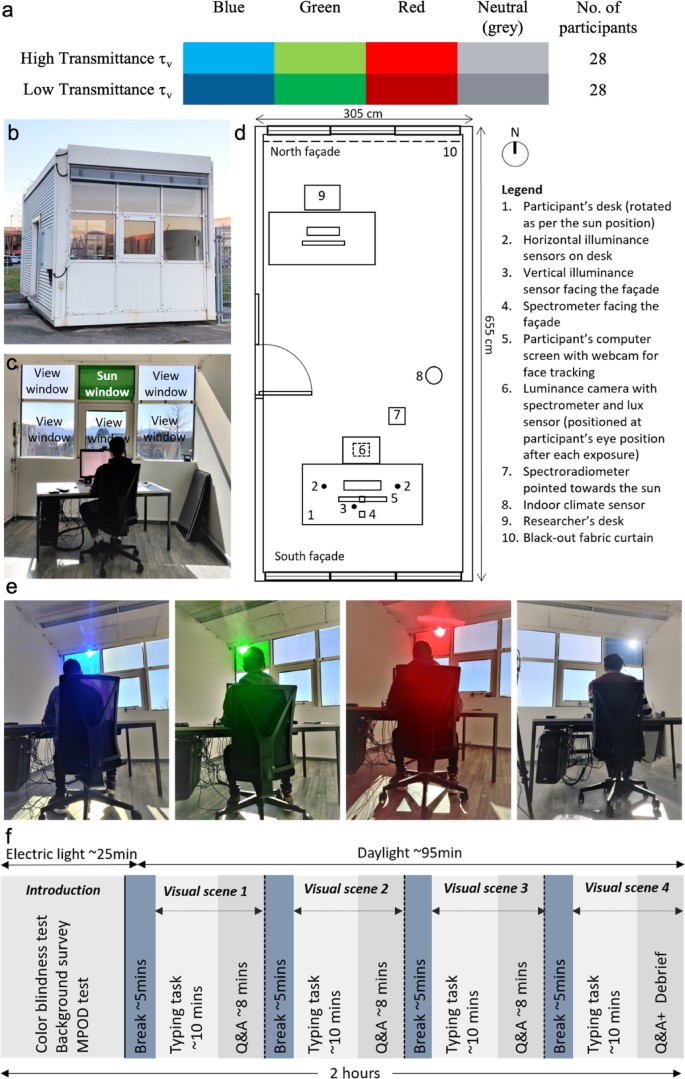
Assistant Professor
Luke Hellwig
- School of Liberal Arts and Sciences
- Science and Math
Influence of color on glare perception revealed when seeing the sun through colored glazing
Co-Author: Sneha Jain, Jan Wienold & Marilyne Andersen
The influence of color on discomfort glare from daylight remains unknown, despite its known effects in electric lighting. This gap limits the ability to predict and mitigate glare in environments with colored glazing and filtered daylight. To address this, we conducted experiments in a controlled daylit office where 56 participants were exposed to four glare conditions induced by the sun visible behind the colored glazing. The conditions differed only in glazing color (red, blue, green, and neutral) towards the sun while having similar visual transmittance resulting in similar glare metrics across colors. Results revealed a strong influence of color with red glazing leading to the highest reports of glare, closely followed by blue, while green and neutral were perceived as least disturbing. These findings suggest that current glare models using photopic luminosity function as a spectral weighting are not effective enough and from this, we assume the Helmholz-Kohlrausch effect can apply to glare similar to brightness perception. To explore this, we tested three color appearance models and supplementary photometry system as alternatives. While these models aligned better with subjective glare reports, they require modifications for higher luminance conditions and need to be tested for wider range of stimuli.

How did you first come up with the idea for this work?
I met the lead author, Sneha Jain, at a conference of the International Commission on Illumination in Slovenia in 2023. We were talking about research over dinner and she shared that she was having trouble explaining experimental results she had collected. It turns out that my main research focus at the time was on models of color perception that explain the exact phenomenon that she was struggling with. So, I offered to analyze her data using my model and that analysis ended up in the final paper.
What was your research process like?
Since Sneha was located in Switzerland at the time and I was in the US, our collaboration occurred virtually. She shared her data with me and I performed my analysis on it, and then we would discuss over Zoom.
How long did you work on this before it was published?
This collaboration began two years ago.
Does this work relate to your role at FIT? If so, how?
Involvement in the International Commission on Illumination continues to be a main aspect of my scholarly work.
What was your biggest challenge? What was most rewarding?
Color Science is a niche field but it touches many different parts of our life. It was rewarding to find a totally new application to me in architecture and specifically models of glare perception.
- Member of the FIT Faculty since August 2024
- Article published October, 14 2025
